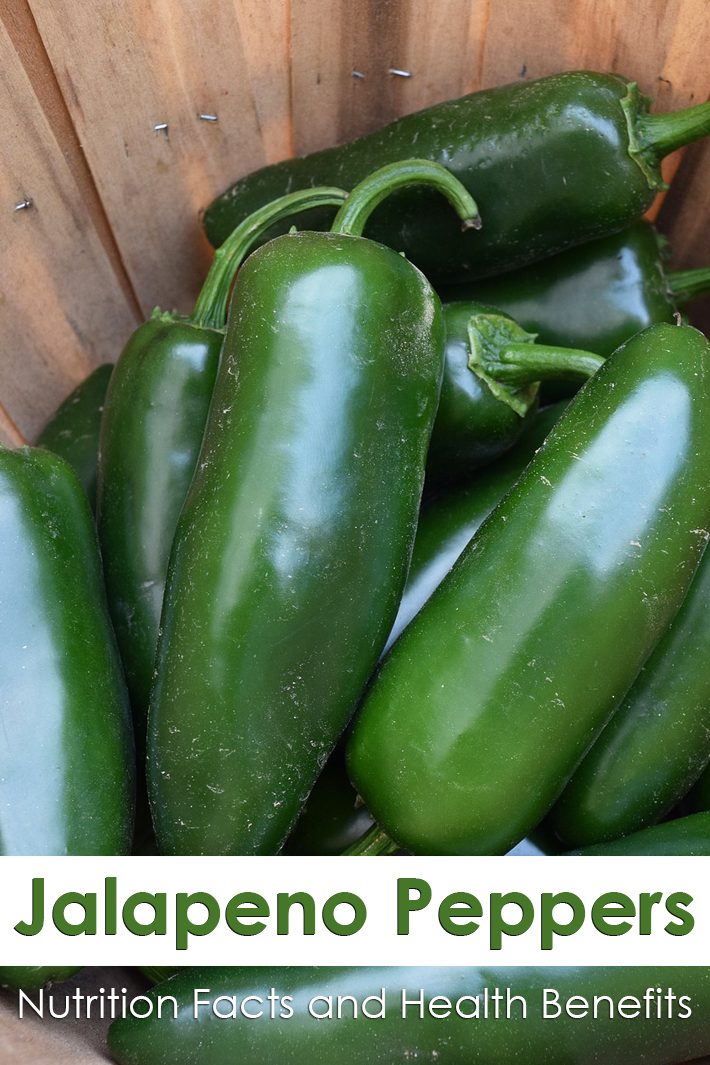
Jalapeno peppers are one of the favored varieties of chili peppers used in the North American cuisine, especially in the Southern states, where Tex-Mex cuisine is popular. Just as in other chili peppers, jalapenos too originated in the Mexico. In fact, the name “jalapeno” is derived from provincial capital, Xalapa in the Eastern Mexican Veracruz state, where they cultivated by early settlers since centuries. Later, the crop was introduced to the rest of the world through Spanish explorers.
Botanically, jalapeno pappers are fruit pods from the nightshade family (Solanaceae), in the genus, capsicum. Scientific name: Capsicum annuum.
Jalapeno is a perennial small herbaceous plant with woody stem growing up to a meter in height. It grows well under fertile, well-drained soil conditions. Adequate sunlight and moisture requirements are the other main factors influencing foliage, flower, and fruiting conditions. The plant bears tiny, white flowers after about 45 days after transplantation and green pepper pods after about 60 days. Mature jalapenos generally exhibit small cracks around the shoulders of the fruit. Harvesting ripe red fruits (chipotle) may last over several months.

The pods measure about 4-10 cm in length and feature smooth shiny skin with blunt, slightly tapering tip. Inside, each fruit features numerous tiny, white, circular, and flat seeds. The seeds cling on around the central, white-placenta. As in other chili peppers, jalapenos also have a strong spicy taste that comes to them from certain active alkaloid compounds; capsaicin, capsanthin and capsorubin. On the Scoville scale hotness scale, jalapeños fall in medium-hot range 2,500-4,000 “Scoville heat units” (SHU). On comparison, sweet bell peppers have zero units, and Mexican habañeros have 200,000 to 500,000 units.
Health benefits of jalapeno peppers
- Chilies contain health benefiting alkaloid compound, capsaicin, which gives them strong spicy pungent character. Tolerance level of peppers in human beings, including jalapeno peppers, may have wide individual variations. Wherever feasible, they should be consumed in moderation to avoid any untoward experiences. Nonetheless, they packed with an impressive list of phto-chemical compounds that are known to have disease preventing and health promoting properties.
- Capsaicin has been found to have anti-bacterial, anti-carcinogenic, analgesic, and anti-diabetic properties, at least in some early laboratory studies on experimental mammals. It also found to reduce LDL-cholesterol levels in obese individuals.
- Fresh jalapeno peppers are rich source of vitamin-C. Ripe fruits have more of this vitamin than raw greens. 100 g provide about 118.6 µg or about 198% of RDA. Vitamin C is a potent water-soluble antioxidant. It is required for the collagen synthesis within the body. Collagen is the main structural protein required for maintaining the integrity of blood vessels, skin, tissues, organs, and bones. Regular consumption of foods rich in vitamin C helps the body protect from scurvy; develop resistance against infectious agents (boosts immunity) and scavenge harmful, pro-inflammatory free-radicals from the body.
- Furthermore, they contain other valuable antioxidants such as vitamin A, and flavonoids like beta-carotene, alpha-carotene, lutein, zea xanthin, and cryptoxanthin. These antioxidant substances in capsicum help to protect the body from injurious effects of free-radicals generated from stress and disease conditions.
- Jalapeno chillies characteristically contain more pyridoxine, vitamin E, vitamin K than other varieties of peppers. Vitamin K increases bone mass by promoting osteotrophic activity in the bones. It also has the beneficial effect in Alzheimer’s disease patients by limiting neuronal damage in their brain.
Selection and storage
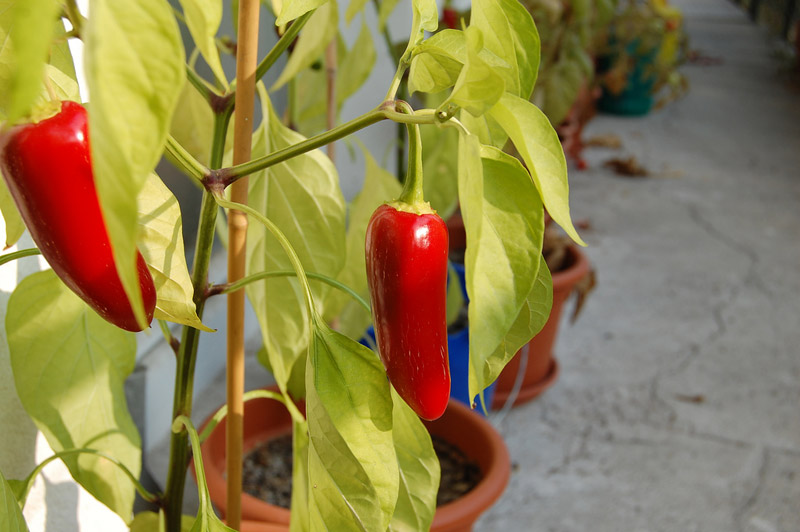
Fresh green and ripe jalapeno peppers can be readily available in the US markets all around the season. During winter months, they are generally imported from Central American countries, especially from Mexico. You may find organic pods in the local farmer’s markets.
Buy fresh, green, firm uniform sized peppers featuring smooth shiny skin and blunt ends. It is fine to have white markings at the shoulder ends for jalapenos. Avoid dry, wilt, and pods with cracks, cuts and surface bruising.
At home, store them in vegetable compartment inside the refrigerator set at high relative humidity. They keep well for up to a week. Pickled jalapenos can be stored for several months when stored inside the refrigerator.
Preparation and serving methods
To prepare, wash them in cold water and mop dry using a soft absorbent towel. In general, wear gloves while handling hot variety chili peppers. Remove the stem. Chop or slice as you wish. Discard the seeds and central white placenta, if in case, to avoid excess hotness. Grilling under mild heat also reduces their hotness in addition to imparting smoky flavor.
Jalapeno peppers have successfully made inroad into the US households since their usage found several interesting variations in cuisine like, Tex-Mex cuisine (Texas-Mexican cuisine). Raw green, grilled, smoked, pickled jalapenos employed in a variety of Latin American, Spanish, Caribbean, and Asian cuisines.
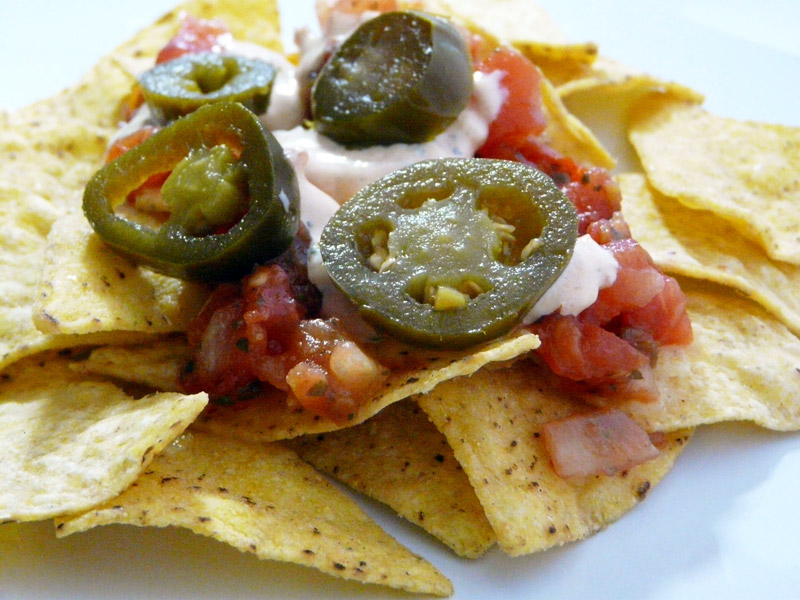
Here are some serving tips:
- They can be used in place of bell peppers in the preparation of ratatouille, a traditional Occitanian recipe.
- Raw green jalapeno peppers added along with tomatoes and white onion to prepare fresh pico de gallo.
- They can be experimented with other fruits and vegetables to make salsa, guacamole, chutney, and salads.
- Split halfway lengthwise, remove seeds and stuff with sausage, cheese, etc., to prepare relishing stuffed-jalapenos (jalapeno poppers).
- Mexican and Tex-Mex American cuisine chiefly pivot around smoke-dried jalapenos, known as Chipotle.
- Add jalapeno rings as pizza toppings.
- Pickled jalapenos are eaten with sandwiches, tortilla, burgers, etc.
- Jalapeno peppers are one of the regular ingredients in mouthwatering Tex-Mex cuisine, nachos, chili con quiso, fajita, etc.
- They also add special flavor and spiciness to vegetable stews, poultry, meat and seafood dishes.
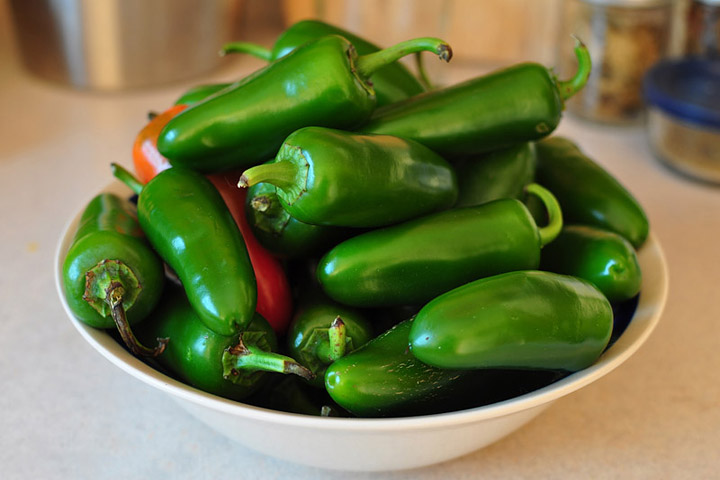
Safety profile
As in other hot chili peppers, jalapeno pappers too contain an active component in them, capsaicin, which gives strong spicy pungent character. Even a few bits may cause severe irritation and fiery sensation in mouth, tongue, and throat.
- Capsaicin in jalapeno peppers initially elicit inflammation when it comes in contact with delicate mucus membranes of oral cavity, throat and stomach, and may soon elicit severe burning sensation that is perceived as ‘hot’ through free nerve endings embedded in the mucosa. Eating cold yogurt dilutes capsaicin concentration, prevent its contact with stomach walls, and thus may help reduce burning pain.
- Avoid touching eyes with chili-pepper contaminated fingers. if so, rinse eyes thoroughly in cold water to reduce irritation.
- Like in chillies, jalapeno peppers may aggravate existing gastritis, stomach ulcer, and gastro-esophageal reflux (GER) conditions.
- Prolong consumption of old, spoiled chillies would pose the risk of exposing to certain chemical compounds like aflatoxin (fungal mold), which have been known to cause stomach, liver, and colon cancers.
Please follow us on Pinterest and enjoy our collection of recipes, crafts, fitness, health tips, gardening, DIY and more…
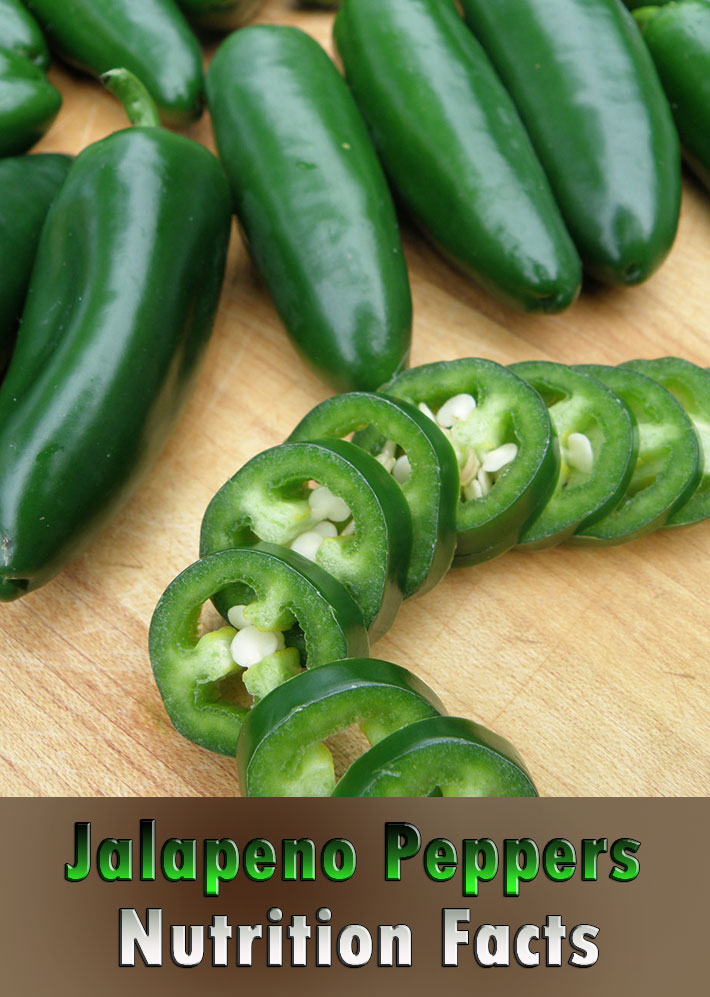




Leave a Reply